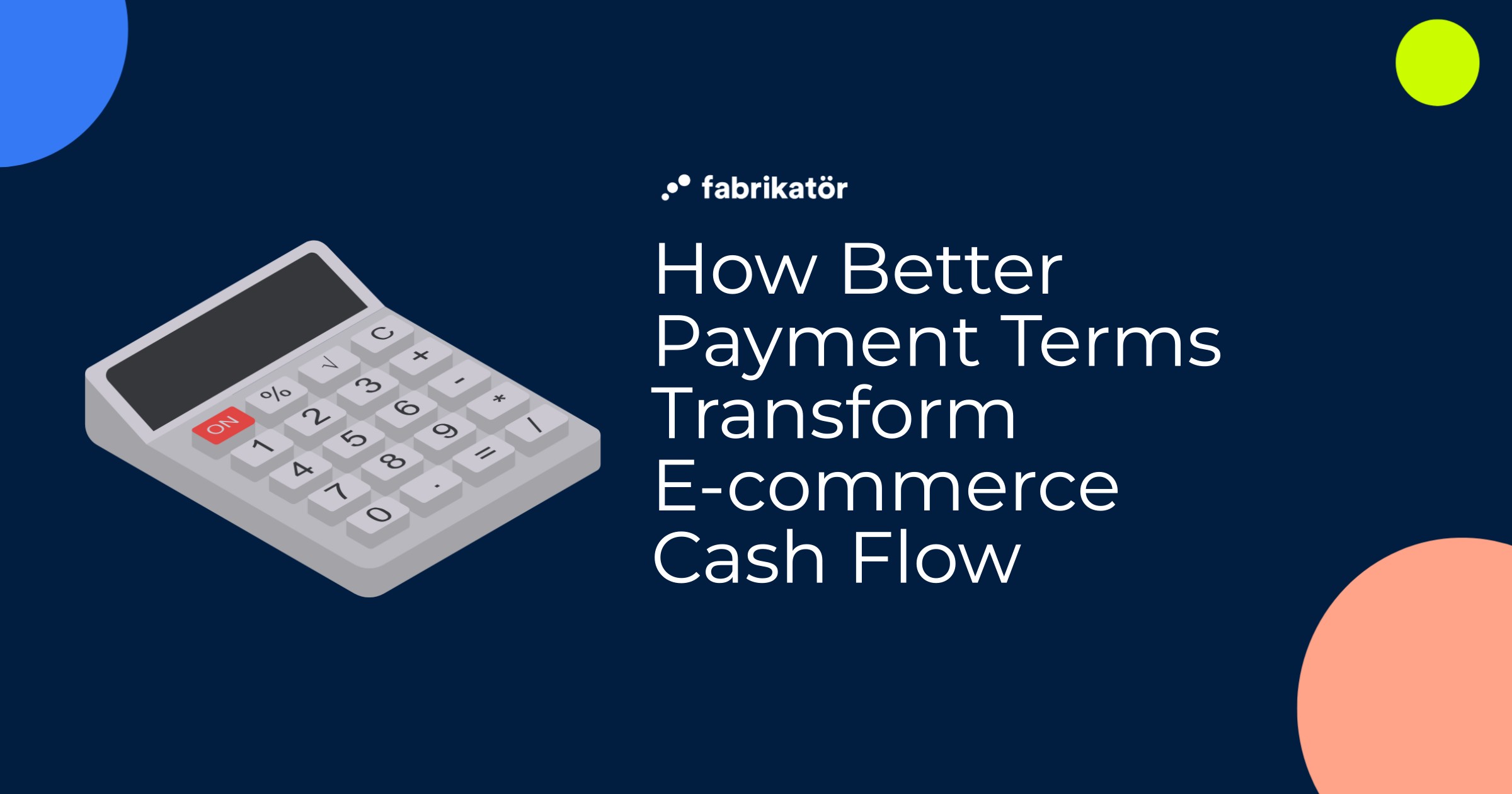Inventory Velocity in eCommerce

There is a question eCommerce owners often ask: "How many times does my stock turn over?" 🤔 This reveals their desire to understand the efficiency of their inventory management. At this stage, the inventory turnover ratio becomes crucial in clarifying how well their products sell and how effectively they manage stock levels. 📊
In this article, we'll first understand what it means and discuss its calculation, benefits, and best solutions to optimize your inventory turnover ratio for greater success. 🚀 Let’s start!
What is Inventory Velocity?
Inventory velocity, or inventory turnover, refers to the rate at which your inventory is sold and replenished over a given period. Investopedia also defines inventory turnover ratio is a financial ratio showing how many times a company turned over its inventory in a given period.
It’s calculated using the inventory turnover ratio, a key metric that helps ensure you maintain the right stock levels at the right time to meet demand efficiently.
The ideal inventory velocity ratio for most eCommerce retailers typically falls between 2 and 4, meaning that inventory is sold and replenished twice to four times yearly. However, this ideal range can vary significantly depending on the industry and product type. For instance, fast-moving consumer goods may aim for a higher inventory turnover due to quick sales cycles, while luxury items might have a lower ratio since they sell less frequently.
In any scenario, it’s essential to sustain this balance. It ensures that one eCommerce store does not have too much deadstock or run out of stock. Well, but how do you calculate it?
What is the Inventory Velocity Formula? ✍️
You can calculate this ratio with two different formulas.
1️⃣ To calculate the inventory turnover rate for your eCommerce store, you divide the cost of goods sold (COGS) by the average inventory value over a specific period. The COGS represents the total cost spent on producing or purchasing the goods sold. On the other hand, the average inventory value is the mean of the inventory levels at the beginning and end of the period.

2️⃣ To calculate inventory velocity, divide the units sold by the average number of units on hand during a specific period. The number of units sold represents how much product has been moved or sold, while the average number of units on hand reflects the typical stock level available for sale.

The two formulas help eCommerce businesses understand how fast their products are moving. This makes it easier to maintain stock levels at the right level. Let’s continue with an example to understand this calculation better.
How to Calculate Inventory Velocity? 🔢
👕 Imagine you’re running a Shopify-based eCommerce store specializing in trendy graphic t-shirts. Over the past year, your store sold $60,000 of these t-shirts; your average inventory value was $12,000. By calculating your inventory turnover ratio, you find that it is 5.0 (calculated as COGS divided by average inventory). This indicates that you sold and replenished your graphic t-shirt inventory five times in the past year, which reflects a strong demand for this product. An inventory turnover ratio of 5.0 is often considered ideal for such low-margin products in the apparel industry, as it suggests efficient apparel inventory management and healthy sales performance.
📊 With an inventory turnover ratio of 5.0, you can infer that your stock levels are efficient; you are effectively selling through your eCommerce inventory without overstocking. This suggests a proactive approach to managing your inventory. If your ratio were to increase beyond 5.0, it could indicate a risk of running out of stock, as your t-shirts sell faster than you can replenish them. Conversely, if the ratio were below 3.0, overstocking would suggest that you reconsider your purchasing strategy or run promotions to increase sales. Understanding this ratio empowers you to make informed decisions about restocking, marketing efforts, and potential price adjustments.
📦 Understanding and utilizing the inventory turnover ratio is crucial for efficient eCommerce inventory management, especially during peak seasons like Black Friday and Cyber Monday (BFCM). High demand during these shopping events can lead to rapid sales, making it vital to maintain optimal stock levels. With a clear grasp of your turnover ratio, you can proactively adjust your inventory based on anticipated sales. For example, knowing that your graphic t-shirts have a turnover ratio of 5.0 allows you to confidently increase your stock ahead of BFCM, ensuring you meet customer demand while avoiding stockouts. This strategic approach maximizes sales opportunities and enhances customer satisfaction, ultimately contributing to your store's growth and success during critical shopping periods.
After learning how to calculate the inventory velocity ratio, it's essential to understand why monitoring inventory turnover is important for your eCommerce store.
📌 Do you need a detailed plan outlining what to do before, during, and after BFCM? Access the BFCM Playbook here.
Why is Monitoring Inventory Turnover Important in eCommerce? 🕵️

Understanding your inventory velocity will assist in several of your eCommerce businesses:
Better Inventory Management 📦
By tracking inventory velocity, you gain insights into which products are selling quickly and which are not. This allows you to adjust your stock levels accordingly, ensuring that popular items are available while avoiding excess inventory that can lead to unnecessary costs. Additionally, monitoring velocity helps you predict demand more accurately, which prevents stockouts. This proactive approach ensures sufficient inventory to meet customer needs, protecting your sales and maintaining customer satisfaction.
📌 You can identify the popularity of your products with ABC Analysis. For more information, read ABC Analysis for eCommerce Inventory.
Lower Holding Costs 💰
When inventory turnover is high, it indicates that products are selling quickly, which means less money is tied up in unsold goods. This reduction in holding costs frees up cash flow for other business needs and minimizes expenses related to storage, insurance, and potential spoilage.
Less Dead Stock & Overstock 🚫
Monitoring velocity helps you identify slow-moving items early on. By addressing these products promptly, you can avoid the accumulation of dead stock, ensuring that your warehouse remains efficient and that you’re not wasting resources on items that are unlikely to sell.
Increased Profitability 📈
By optimizing inventory turnover, you can focus on selling fresh, in-demand products, which reduces waste and enhances profitability. High inventory velocity means you’re more likely to sell items at full price, maximizing your margins and minimizing markdowns.
Faster Decision-making ⚡
With real-time data on inventory velocity, you can make quicker and more informed purchasing decisions. This agility enables you to respond effectively to market changes and customer preferences, ensuring your inventory aligns with current trends and demands.
Now that we understand why monitoring inventory turnover is important let’s look at the key metrics that affect inventory velocity.
Key Metrics That Affect Inventory Turnover Ratio in eCommerce 📊
A few crucial factors may impact your inventory turnover ratio:
- Product Cycle Frequency 🔄: The more frequently product cycles are completed, the higher the velocity!
- Lead Time ⏳: Shorter lead times from suppliers mean faster replenishment, keeping your eCommerce inventory fresh.
- Transit Time 🚚: Reducing the time it takes for products to reach your warehouse enhances eCommerce inventory circulation and keeps stock flowing.
- Demand Variability 📈: Seasonal changes in demand influence how you should manage your inventory, helping you stay responsive to customer needs.
With these key metrics in mind, explore proven strategies to improve inventory velocity and optimize your inventory management.
Strategies to Improve Inventory Velocity for Your eCommerce Store 🏆
Want to increase your inventory velocity? Here’s how:
- Check your stock and restock regularly to maintain optimal levels for your eCommerce store. ✅
- Consult with suppliers to reduce delivery times. ✅
- Enhance supplier relations to improve lead and transit times—work on those relationships! ✅
- Predict demand for specific products to avoid buying too much or too little throughout the year. ✅
- Run promotions and sales to boost demand and improve turnover. ✅
and ****migrate from Excel to specialized inventory management software like Fabrikatör for better data analysis and real-time tracking, streamlining your processes. ✅ Why? Let’s start with calculating inventory turnover formula on Excel and then discuss why its not the most efficient solution.
How to Calculate the Inventory Turnover Ratio in Excel?
Calculating your inventory turnover ratio in Excel can provide valuable insights into your inventory management. To do this, follow these steps:
- Gather Your Data: Collect the necessary data, including your Cost of Goods Sold (COGS) and average inventory value for the period you want to analyze.
- Open Excel: Launch Excel and create a new spreadsheet.
- Input Your Data:
- In cell A1, enter "Cost of Goods Sold (COGS)."
- In cell A2, input your COGS figure.
- In cell B1, enter "Average Inventory Value."
- In cell B2, input your average inventory value.
- Calculate the Ratio:
- In cell C1, enter "Inventory Turnover Ratio."
- In cell C2, input the formula:
=A2/B2. - Press Enter, and Excel will display your inventory turnover ratio.
Is Calculating Inventory Velocity Ratio in Excel Efficient? 🤔
Well, it doesn’t seem so. While using Excel to calculate your inventory turnover ratio is effective for obtaining insights, Excel may not be the most efficient method for growing eCommerce stores, especially those with many SKUs. Data entry can be time-consuming, and the likelihood of human error increases as your inventory grows.
These errors can significantly affect the reliability of your data, leading to inaccuracies in your inventory turnover ratio. As a result, the decisions made based on this ratio may be flawed, which can negatively impact your inventory management strategies. Instead of relying on spreadsheets, utilizing dedicated inventory management software, like Fabrikatör, can help automate data entry, minimize errors, and provide real-time insights for your eCommerce store. This ensures that your inventory velocity ratio is accurate and that your business decisions are based on reliable data.
How Fabrikatör Can Help You Master Inventory Velocity? 🛠️
To effectively manage your inventory velocity, Fabrikatör offers intelligent and automated features that empower eCommerce business owners to take control of their inventory:

- 📈 Get actionable insights to make changes that help boost your inventory turnover ratio,
- 📝 Create purchase orders quickly for bundles and promotions, ensuring you maintain optimal stock levels,
- Receive instant notifications when stock is running low so you can restock before you risk stockout,
- 📈 Predict upcoming sales to effectively manage your eCommerce inventory and promotions, aligning stock with demand.
and more! With Fabrikatör, you can enhance your inventory turnover ratio and watch your profits soar! 🤑 Ready to see it in action? Schedule a demo today!










